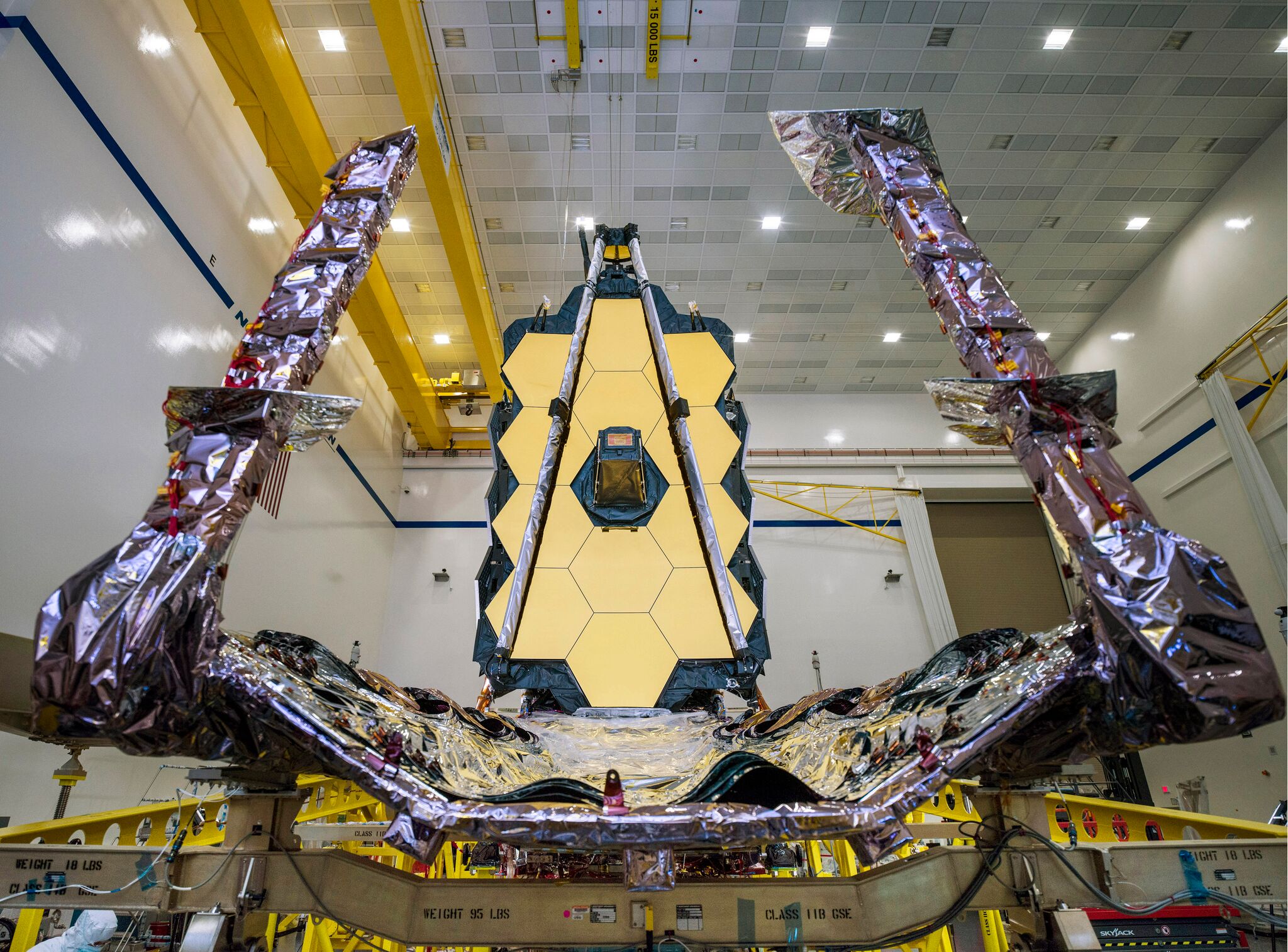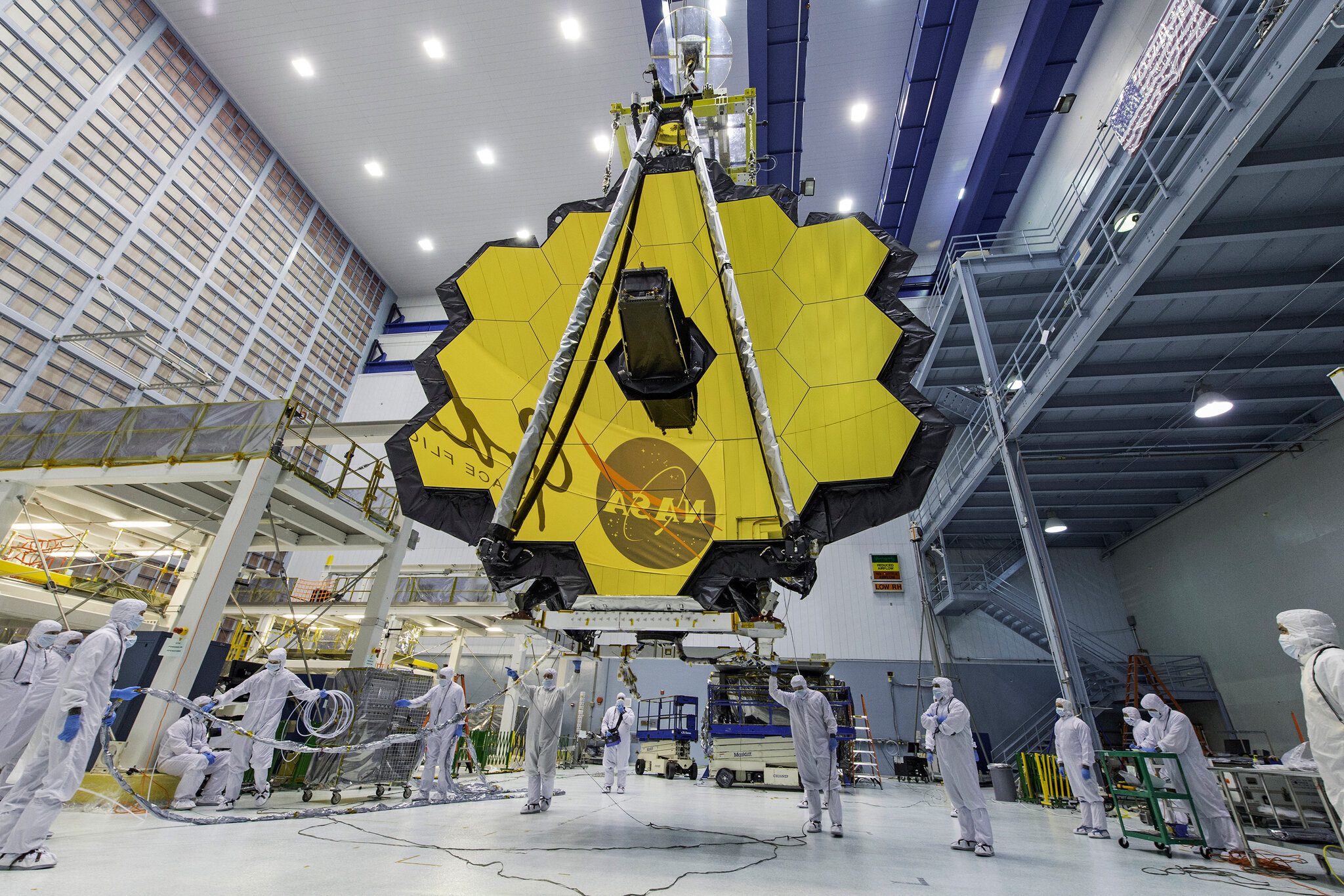- The James Webb space telescope will be launched by NASA into space on 18th December 2021.
- The telescope will succeed the Hubble Space Telescope but will not orbit the Earth, like its predecessor but rather the Sun.
- The telescope will find the first galaxies ever formed and will also visualise stars forming planets, providing crucial details to astronomers.
The James Webb space telescope, often abbreviated as JWST is a joint venture between NASA, the European Space Agency(ESA) and the Canadian Space Agency(CSA). It was manufactured by the Northrop Grumman Corporation and Ball Aerospace & Technologies. It is currently considered to be one of the greatest astrophysics missions to be ever witnessed by the human race.
The logistics and specifications
The Webb telescope has a mirror measuring almost 20 feet to capture the essence of space with absolute accuracy. It is also equipped with a sunshade to block out solar radiation. This shade measures around the size of a whole tennis court. The telescope has state of the art cameras and sensor systems to collect and process the data obtained. It works almost as similar to a satellite dish.
Light from various galaxies is bound to enter the mouth of the telescope and reflect off the primary mirror toward the four sensors. These sensors are responsible for different aspects:
- The NIRCam, takes photographs in the near-infrared region.
- The Near-Infrared Spectrograph can split the light from several sources like galaxies into their constituent wavelengths and measures the strength of each colour.
- The Mid-Infrared Instrument takes images and measures wavelengths in the middle infrared region.
- The Near Infrared Imaging Slitless Spectrograph splits and measures the light of any object the scientists direct the satellite at.
Scientists and astronomers have described The Webb telescope essentially as a giant heat telescope. It detects mainly infrared radiation. Hence, to visualise stars or galaxies in infrared light, the telescope needs to be exceptionally cold or else it can’t detect anything other than its radiation. This is where the heat shield equipment comes into action. The shield is made of thin plastic-coated aluminium. It is five layers thick and will fulfil the task of maintaining the telescope at minus 390 degrees Fahrenheit (minus 234 Celsius).
The mission set for the Webb Telescope
Astronomers are hoping with the launch of the JWST, they will be able to study the very first galaxies of the universe to be formed. Hence, the Webb Telescope has been given the name “The first light machine” in this regard. Also, scientists are hoping to study other newer, distant galaxies close to the edge of the observable universe. Since space is always expanding, these newer galaxies might also house planets worth exploring. With the Webb telescope, scientists will be able to determine the atmospheric composition of these planets to deem them fit for human habitation as well. Researchers also aim to study the pattern of birth of various stars in different galaxies, particularly the Milky Way, our home. They also wish to study certain “protogalaxies” formed recently about 300 million years post the Big Bang. The Webb telescope will also help in the visualization of stars giving birth to new planetary systems.
Testing and the final launch date
Over the past 12 years, the team behind the Webb telescope has tested its constituents and instruments, in a simulated environment to mimic the actual rocket launch. They also rehearsed the extreme cooled operating conditions of the telescope.
The launch date for the telescope has been set to 18th December 2021. The launch will take place at the Guiana Space Center at the ELA-3 launch pad in French Guiana. An Ariane 5 rocket will be used to take the telescope to its destination orbit around the Sun, 1.5 million kilometres away. Astronomers identify this specific point as the second Lagrange point or L2.
What happens after the Webb telescope reaches its orbit?
Once it reaches orbit after launch, it will take another 35 days before the parts get cooled optimally to start the very crucial next step known as alignment. The telescope will unfold and align itself over another 6 months. Since the telescope is making its journey to one of the farthest points of the known universe, it can’t be serviced by astronauts. Instead, the Webb telescope will be controlled remotely by radio signals monitored by an efficient team at the Space Telescope Science Institute in Baltimore.
In the alignment process, the first to unfold will be the mirrors. The NIRCam equipped on board will take high-resolution images of these mirrors to ensure accuracy. To ensure this flawless process of alignment a set of two NIRCams are present on board in case one fails. The telescope team on the ground will analyze the images and adjust motors accordingly to make any necessary changed. Once the motors move the mirrors into position, the Webb telescope will begin collecting data.



